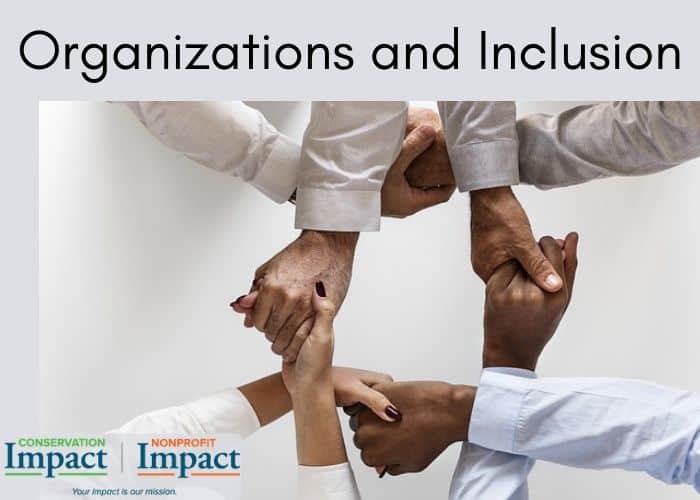
Inclusivity in Organizations
Imagine an organization with 35 staff spread across 5 states. As part of their internal discussions on issues related to diversity, equity, and inclusion (DEI), they decide to adopt a flatter organization structure to align with their commitment to operating in a more inclusive way.
Now, imagine yourself as a member of that organization’s leadership team. What does this mean for your role? Does a flatter, more inclusive structure mean that everyone weighs in on every decision? Does leadership abdicate their role in setting direction or defining parameters? How do you find the right balance between ensuring your organization stays productive and effective and really “walk the talk” of inclusiveness?
Flat organizations require strong leadership
To be clear, we aren’t DEI experts. We’re nonprofit and public sector organizational development specialists. That means that we approach organizations as systems, understanding how the practices of leadership and management, the productivity of staff or partner teams, the structures and infrastructures, and the more intangible values and philosophies must align in order to be successful and sustainable.
So, guess what? If your flat organizational structure makes you clunky and inefficient, if it gets in the way of making an impact towards your mission—then it’s time to step up your leadership game.
“Lack of hierarchy, though, does not mean lack of leadership. Paradoxically, flat organizations require stronger leadership than hierarchical ones. Flat organizations often devolve into chaos when leadership fails to set clear strategic priorities and directions. Amazon and Google are very flat organizations in which decision making and accountability are pushed down and employees at all levels enjoy a high degree of autonomy to pursue innovative ideas. Yet, both companies have incredibly strong and visionary leaders who communicate goals and articulate key principles about how their respective organizations should operate.”
My new favorite quote highlights a critical truth—that is important to keep in mind as your organization discusses DEI. Your organization is a system. When you create change in one part of the organization—whether that’s implementing a flatter structure, changing your board recruitment practices, or incorporating an equity lens into your programmatic work—there will be additional shifts needed in other parts of the organizational system. Flatter organization? Stronger, more focused leadership.
It’s wonderful to see so many kinds of organizations talking about DEI. Just remember to follow through and adapt your organizational system if you want to authentically incorporate diversity, equity, and inclusion into the fabric of your organization.

